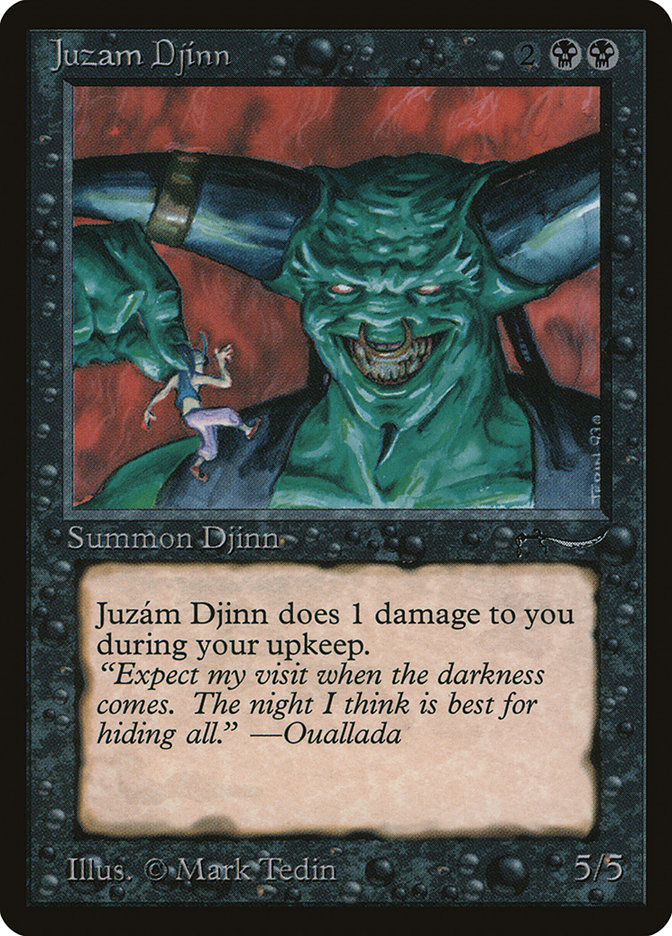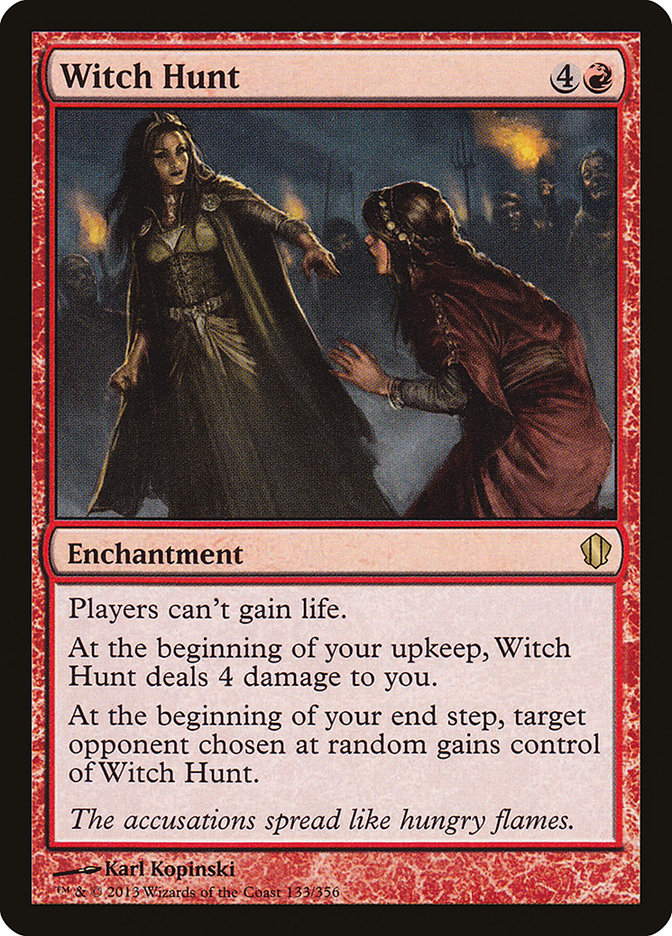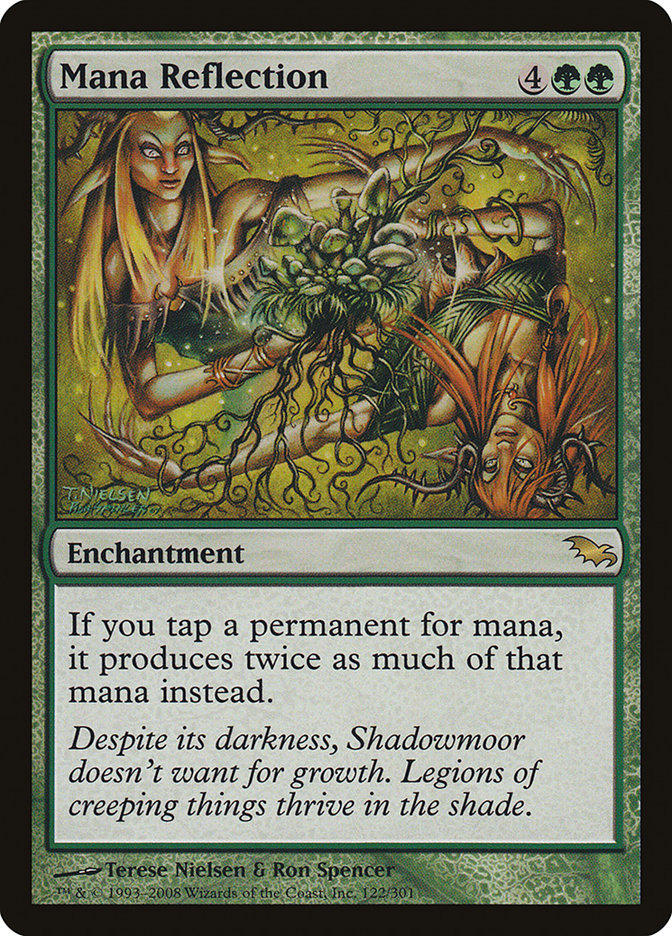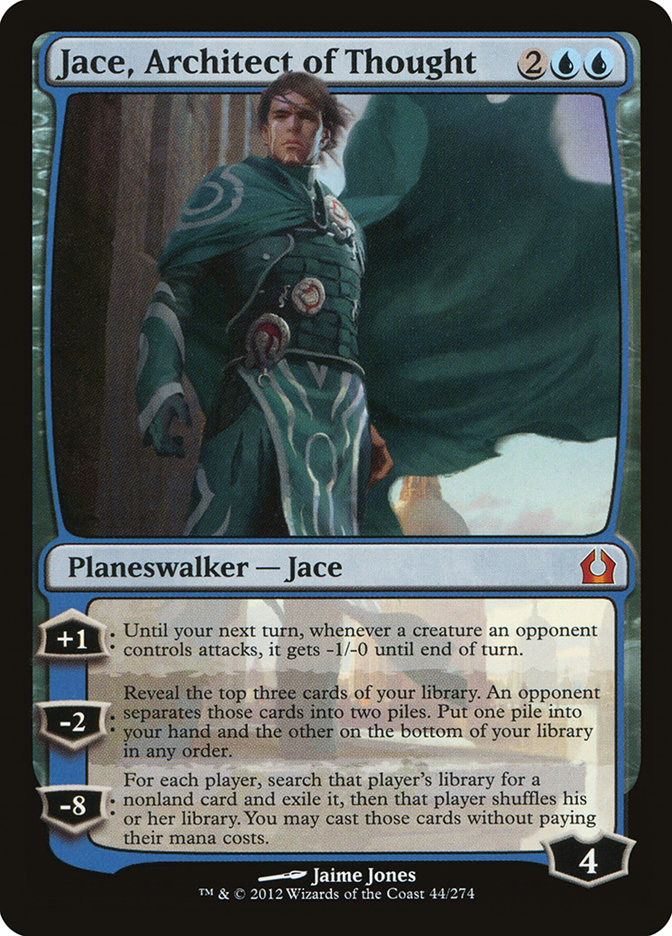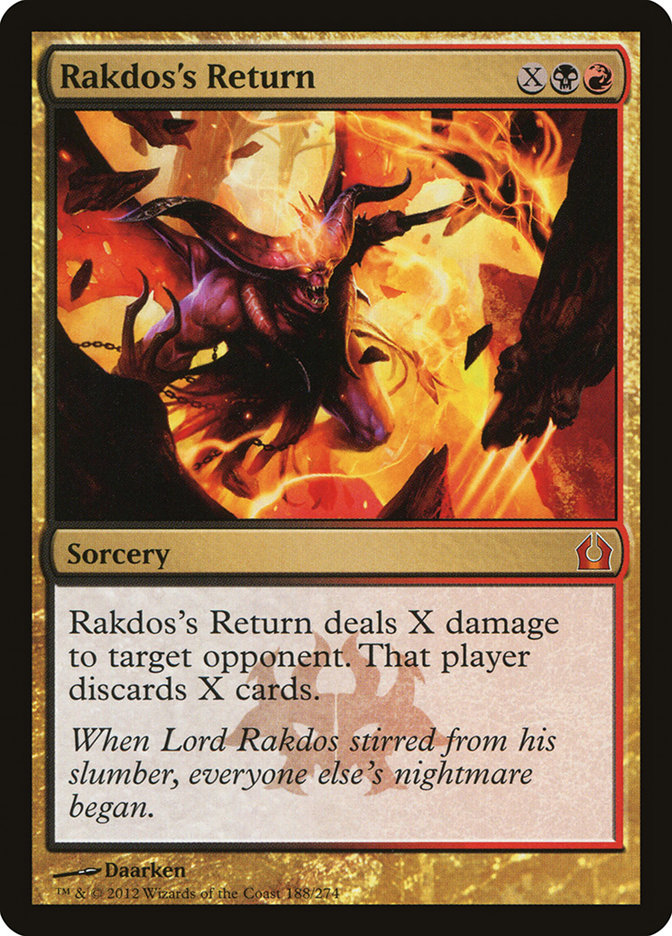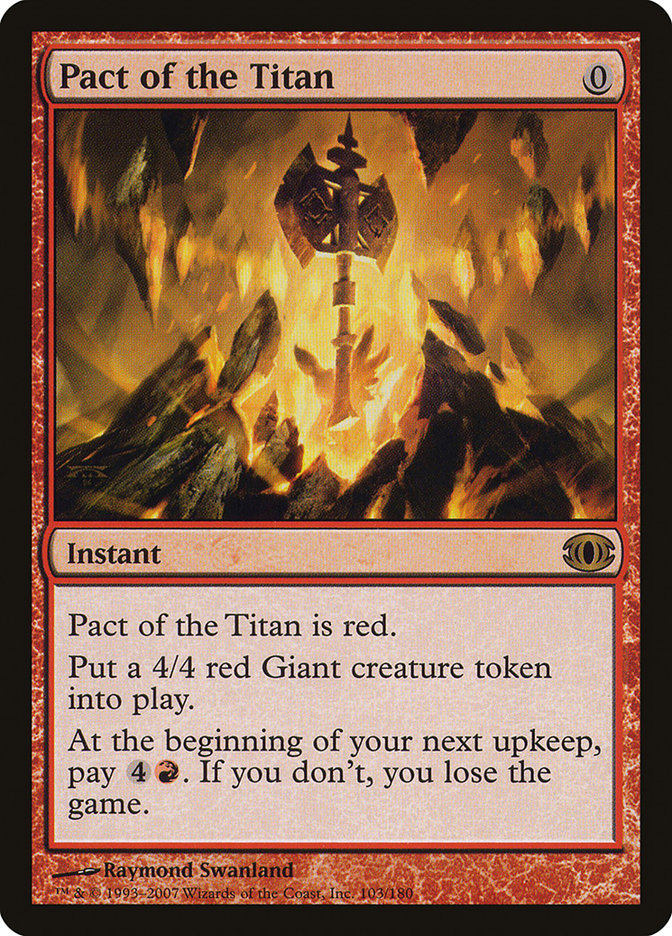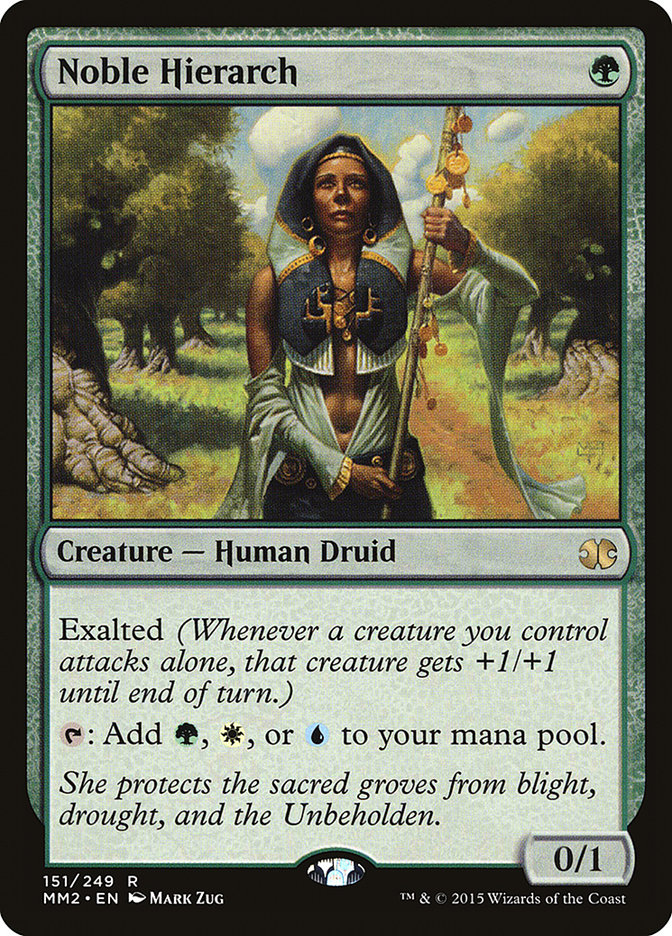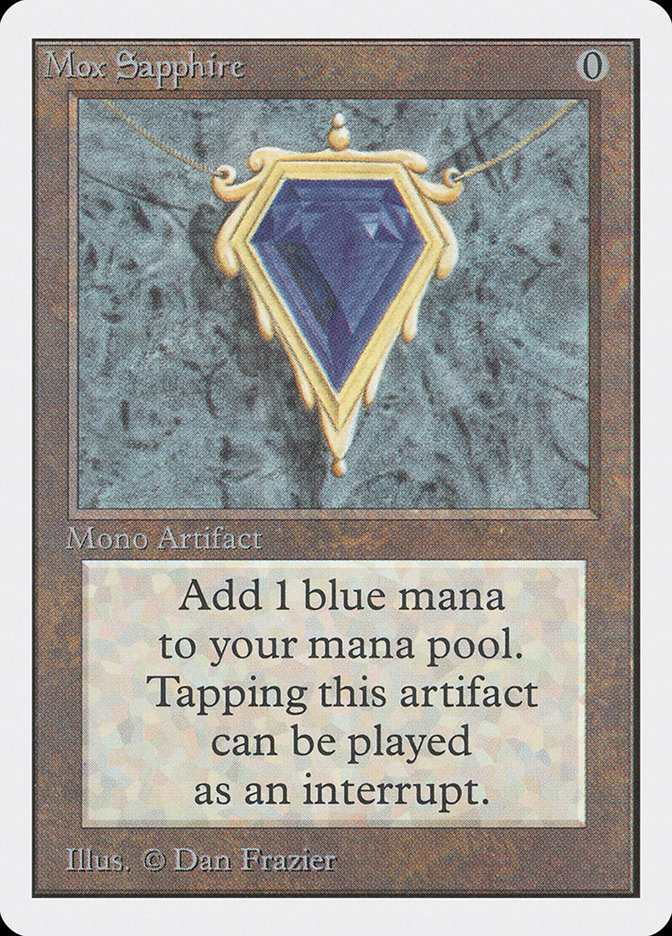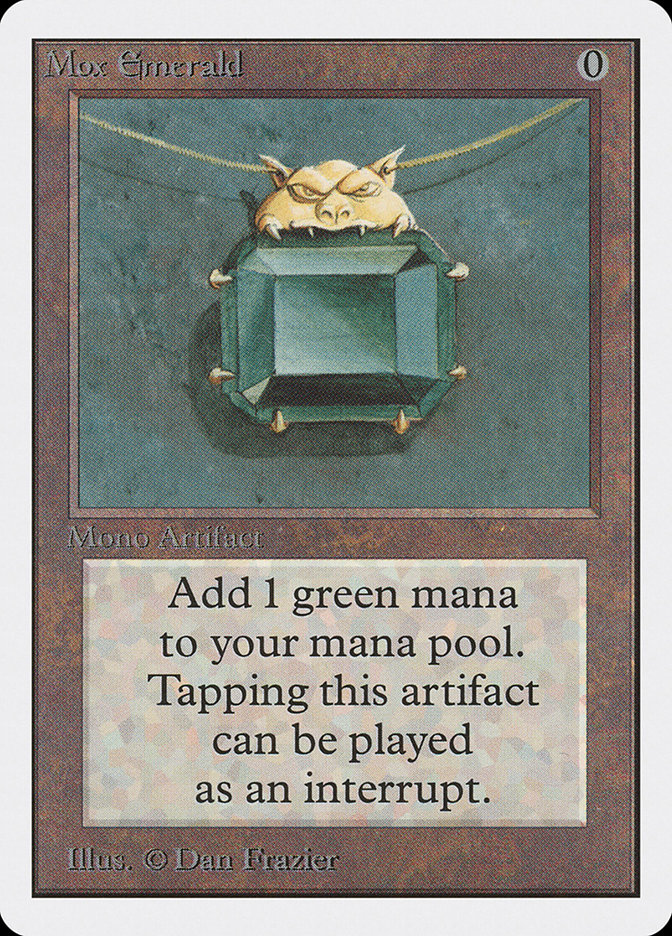The advent of a new format is one of the biggest things that can happen in the world of Magic finance. As Commander grew in popularity, hundreds of sub-$1 casual staples became double-digit trade chips. After WotC announced Modern, prices went absolutely bonkers—my collection of Ravnica shocklands went from being worth about $10 each to about $50 each overnight. Even Old School, a format that is still relatively obscure, has caused cards like Juzam Djinn to triple in value.
Not all homebrew formats catch on, though. I still have several dozen foil copies of Ambassador Laquatus sitting in a box somewhere thanks to some dubious Tiny Leaders speculation. Eternal, the non-reserved list Legacy alternative, seems to be heading toward the dustbin of history as well. And you don’t want to be wrong about this: investing in a format that goes nowhere is a great way to end up with a houseful of Magic cards that don’t really have much chance for future growth outside of Cube drafting and the like.
Enter Frontier, an eternal (non-rotating) format that begins with Magic 2015 and Khans of Tarkir block. Unlike some of the other homebrew formats we’ve seen, Frontier has some pretty big names behind it: Hareruya and BigMagic, two of the largest stores in Tokyo, Japan, have launched the format with a relatively high profile series of tournaments. And while I haven’t heard about too many other stores running Frontier events yet, the internet is abuzz with questions about the possible future of the format.
What might a new format require to succeed? Does Frontier have what it takes? If not Frontier, what might WotC do about creating a “post-Modern” Eternal format? Oh—and let’s not forget the most important question: If Frontier does take off, what cards should you buy in anticipation?
It’s Frontier week here in my column, so grab your machete and join me at the edge of the wilderness. We’ve got some exploring to do.
Building a Format
Why do some formats succeed while others fail? I believe it comes down to three things:
· Uniqueness. How similar is your format to other formats that already exist? Can I use cards that I might not otherwise have a home for? Are games going to play out differently than existing formats? In short, should I be excited about what to expect?
· Accessibility. Can anyone build a deck and play, or do you need to have a collection that’s old enough to vote? The more accessible a format is, the easier you’ll be able to run local events and drive community support.
· Fun. Are the games any good, or is it an unbalanced mess skewed toward a single dominant strategy? If a format is unique and accessible but the games aren’t good, it will fizzle out pretty quickly.
Not all formats need to have a perfect 10/10 in all of these categories, of course. Old School is only slightly more accessible than Vintage, but it’s such a unique format that it perfectly appealed to the tiny minority of Magic players at which it is targeted. To use a music analogy, think of Old School as the speed metal of Magic formats. 99.8% of music listeners don’t like speed metal, but that 0.02% will remain dedicated to their favorite genre for life.
Commander was the perfect storm of uniqueness, accessibility, and fun. When it started out, it was a new way to play that gave players a use for all those big and splashy cards that lacked a home elsewhere. It’s easy to see why so many players embraced it without hesitation.
Tiny Leaders, on the other hand, was neither all that unique nor all that accessible. Since good cards with a CMC of three or less tend to be the backbone of Eternal format decks, most of the best Tiny Leaders decks were filled with Legacy staples—too expensive for most newer players to afford. And the pint-sized decks made the games feel more like Legacy in leg irons on than sped-up Commander.
“Eternal” failed along those same lines. The format “Legacy but without the reserved list” might be attractive to players with half a Legacy collection and an unwillingness to spend up on reserved list staples, but it’s still too expensive for newer players to get into. There’s also no reason for existing Legacy players to adopt it unless it becomes the only alternative to Legacy since the metagame is so similar. Also, “Legacy, but without half your favorite decks and a really confusing banned list!” is not a great way to sell a format.
What does Frontier bring to the table? Well, it gets full points for accessibility—most cards from the past few years are quite affordable, and it’s an attractive format for anyone looking for a home for their recently-rotated staples. The Khans fetchlands might get crazy expensive someday, but they’re affordable enough for now. We’re looking good so far.
Uniqueness? I’ll give Frontier half credit. It’s pretty similar to last year’s Standard right now, and it might end up being too similar to Modern in the long term. There might be room for a format like this, but it’s certainly not as unique as, say, Commander was when it was initially proposed. Most of the decks on the burgeoning Frontier circuit should be familiar to anyone who has played Magic recently. Of course, that isn’t to say that the best decks have all been discovered—it’s certainly possible there are some unique and power Frontier brews just waiting to be discovered. It’s just not all that likely thanks to the current size of the card pool.
Fun? That remains to be seen. I haven’t seen enough Frontier results to say whether the format is (or has the potential to be) healthy enough to be fun. The potential for fun is certainly there, but I also know that the old Extended format (it was a rotating format, yes, but it had a similar card pool size to Frontier right now) was always very unpopular. People felt that it was too dominated by Standard decks they were very sick of facing off against. Frontier has to fight against that same fatigue factor—is “Collected Company and Siege Rhino are back!” really going to sell people on a new format?
This again. How joyous.
My initial reaction to Frontier is that it’s starting in the wrong place. I get the impulse to start with Magic 2015—that’s when the card face changed thanks to the inclusion of the anti-counterfeiting hologram, allowing players to easily identify their Frontier cards in much the same way that Modern cards are easy to tell apart thanks to the newer card frame. And it’s possible that this is the correct place to start, but we’ve come to Frontier a few years too early—by 2018 or 2019, say, the format will have enough sets to create a diverse and unique format.
Starting now, though, I can’t help but feel like Return to Ravnica is the natural place to begin—Innistrad is the last set with serious big-money Modern cards, so accessibility wouldn’t be an issue. I can see the architects of the format wanting to avoid the fetchland/shockland interaction, though, so maybe you start with Theros block? Regardless, I worry that Khans forward is just too small a card pool to really attract people to an entirely new format.
Regardless of my feelings, would WotC support Frontier? Any fan-made format that gets enough support will eventually be recognized by Wizards of the Coast—see the Commander 2016 decks that are coming out this week. That doesn’t mean they won’t make their own significant tweaks, though—there was a lot of buzz about the player-created “Overextended” format in the months leading up to WotC’s announcement about Modern, and WotC’s card pool was quite different even though the philosophy was the same. Even if Frontier does catch on, WotC might co-opt it with “Modern II” or something and change the card pool significantly. This is worth remembering before you go too deep on your Frontier speculation.
That said, I’m still not sure that the demand for Frontier will materialize right now regardless. Modern isn’t really inaccessible—in fact, it’s cheaper now than it was a year ago. Is the format a tad stale and unbalanced? Perhaps, but it’s nothing a few bans and unbans couldn’t fix. I think there’s a small minority of players who just hate Modern and think that it is fundamentally flawed, but I don’t really see how Frontier would be much different. Yes, you’ll lose fewer games to linear decks that you didn’t have sideboard tech against, but won’t that problem just keep getting worse as the format ages? Isn’t that one of the issues with a non-rotating format in the linear deck era of Magic design?
To me, the appeal of Frontier is that it will one day open up a lot of deckbuilding space similar to what Modern did several years ago. For this to happen, though, I think the card pool needs to be bigger and Modern needs to be even more resistant to innovation than it is now. It’s possible that the world is ready for Frontier, but I think it’s far more likely that we’re still a few years away at least.
Frontier Staples
Let’s put aside my belief that Frontier got here a little too soon and spend a few moments treating it as a legitimate new format. If Frontier does catch on, what staples are you going to want to own? What currently-underrated cards are worth speculating on? Where is the financial upside?
The good news is that a majority of Frontier’s staples have rotated out of Standard during the past year. Historically, the November/December after rotation is the best time to buy these cards for Modern and Legacy play regardless, so your risk in picking these cards up is already pretty low. As long as you don’t get killed by a number of high profile reprints, now is the right time to buy regardless.
First, and perhaps most importantly, we should look at the format’s mana fixing. Based on what I’ve been seeing so far, decks in Frontier can run three, four, or even five colors. That said, you aren’t going to get far in Frontier (or Modern, or Legacy) without the five Khans of Tarkir fetchlands. These things are still pretty cheap, and they’ve got lots of upside regardless of whether Frontier takes off or not. You probably shouldn’t be speculating on oddball Frontier cards until you grab at least one set of these.
Part of the appeal of Frontier speculation is that you’ll get to play cards that don’t really have a home anywhere else, though. And for that, we’re going to need to see some decklists. I decided to start with Platinum Pro Yuta Takahashi’s Frontier Primer. As one of the format’s biggest advocates and early adopters, Takahashi has spent a lot of time thinking about what might be good.
One deck that makes the cut from last year’s Standard almost intact? Four-Color Rally. The key non-fetchland rares here—as I’m sure you remember—are Jace, Vryn’s Prodigy, Collected Company, and Rally the Ancestors. Both Jace and Collected Company are cheaper than they’ve been in a very long time, would be instant staples if Frontier took off, and have at least some game in Modern. Rally the Ancestors is probably not a Modern card, but it’s a casual favorite and you can snag them for less than a buck each.
One of Frontier’s main selling points is that it is virtually the only format right now where Dig Through Time and Treasure Cruise aren’t banned. Dig Through Time currently retails for $1.19, and there’s no way it wouldn’t see a ton of play in Frontier. I like the Jeskai Black list Takahashi proposes in his primer as a potential landing spot—alongside four copies of Jace and Dig Through Time, he runs Soulfire Grand Master, Mantis Rider, Crackling Doom, and Kolaghan’s Command. Both Soulfire Grand Master and Kolaghan’s Command are playable in other Eternal formats, and the others can be had at bulk rare prices.
Hangarback Walker could become a major staple in Frontier, especially when combined with Kaladesh goodies like Smuggler’s Copter. Takahashi proposes a U/R Ensoul Artifact list, though there are probably several directions you can take this. Regardless, Hangarback Walkers are just $2.50 right now and seem like a fine buy.
Mono-red will be a thing in Frontier, and aggressive creatures tend to fall off hard after rotation because they tend not to stack up well in the existing Eternal formats. As such, you can get Zurgo Bellstriker for $0.50 and Abbot of Keral Keep for $1.50—not bad for two immediate staples if Frontier takes off. There might also be a Goblin Rabblemaster/Goblin Piledriver deck worth considering, and both of those cards are quite cheap at the moment as well.
When looking for decks, we can also examine the results from last week’s Frontier Challenge Cup, a large tournament that took place in Japan. While the format is still beyond raw and you should not take these lists as anything approaching a polished metagame, it doesn’t seem right to ignore some of the only actual results we actually have about what Frontier might really look like.
Without getting deep into the minutia of the decklists—check the link if you want brewing ideas—it’s clear that Frontier’s defining characteristic is the availability of really good mana-fixing. Thanks to the fetchlands and Battle lands, three-, four-, and five-color decks abound. Anafenza, the Foremost is everywhere, and at $1.50 she would likely become one of the first cards I would target in speculation. Dromoka’s Command and Warden of the First Tree also appear a lot in the various Abzan/Bant/Company decklists. Other three-color Khans powerhouses like Siege Rhino and Mantis Rider will see a lot of play. Thalia, Heretic Cathar will probably become a major answer to the four- and five-color decklists that are dominating the top tables.
I wouldn’t think about speculating on any cards that are currently Standard legal—Standard is a far bigger driver of prices than Frontier could ever be, even in a best case scenario—but it’s worth noting that Kalitas, Traitor of Ghet and Torrential Gearhulk were both major players at that tournament. I wouldn’t buy either right now unless I was planning on playing them in Standard as well, but they’re worth keeping in mind if they fall out of favor in Magic’s most popular format.
This Week’s Trends
It wasn’t a big week for movement in the Standard market. Gideon, Ally of Zendikar continues to tick up a little, as does Grim Flayer thanks to the continued dominance of the B/G Delirium strategies. Summary Dismissal is up a bit, as is Wandering Fumarole and Thing in the Ice. The big Pro Tour mythics—Aetherworks Marvel, Torrential Gearhulk, Verdurous Gearhulk—keep dropping as more packs of Kaladesh are opened.
It was a relatively quiet week in Modern as well. The Pact of the Titan buyout has continued, and I’d still sell that one into hype. Noble Hierarch is up a bit, but otherwise prices have been pretty flat.
Online, Peregrine Drake was essentially emergency banned in Pauper. The Drake deck was unbelievably oppressive, so I’d expect an uptick in the price of all the other Pauper staples as people get back into the format. Affinity, Delver, and Mono-Green are the three second tier lists, so expect those prices to tick up a little as they jockey for position at the top of the Pauper rankings.
Comments From Last Week
Do you think that Akiri, Line-Slinger could see some Vintage play? I know that Vintage doesn’t affect prices all that much, but I feel like it’s a decent beater in artifact decks.
– Mik Tampold
I think that’s a little optimistic, Mik. Even if Akiri, Line-Slinger is an easy 4/3 in Vintage, I don’t think too many decks are going to want to run a simple beater that doesn’t have much utility beyond being really good when you draw all your moxen. You know what else combos with a half-dozen moxen? Every other card in your deck.
Since I don’t play enough Vintage to say for sure, though, I did a few quick Google searches to see if there was any buzz about Akiri on any of the Vintage of Legacy discussion forums. So far, nothing. I’d stay away.
With Liliana of the Veil all but certain to be reprinted in Modern Masters 2017, should I hold or sell my copies? Is there a chance of a Tarmogoyf-esque situation [in Modern Masters 2013] where the price hardly tips at all before climbing back to an even higher price?
– Tyson Schmidt
I can think of a few scenarios where Liliana could end up gaining value between now and the middle of next summer, but they’re relatively unlikely. First, Modern could see a surge in popularity and a major increase in the size of the player base. It doesn’t seem to be trending in that direction, but there could always be a new tournament series or a major format shake-up or something else that caused Modern to boom. This is what happened when Modern Masters 2013 was released—the set was so new and exciting that it helped grow the Modern player base just by existing.
Second, Modern Masters 2017 could be a bust. If players don’t deem the packs worth their $10 price tag and Liliana is one of the only good cards that gets reprinted, she might not drop in price that much. This seems unlikely considering the crazy reprinting binge that WotC is on, but Modern Masters 2015 was underwhelming compared to Modern Masters 2013. If that trend continues, a mediocre set this spring isn’t out of the question.
Lastly, Liliana of the Veil might not be in Modern Masters 2017. This isn’t very likely, but stranger things have happened. How’s that Damnation reprint treating you?
In all likelihood, though, you should expect Liliana of the Veil to be reprinted and to experience a price drop between 20-40%. Her current retail price is $110, so you’d be looking at a “loss” of about $130 per playset of Lilianas you keep. Should you sell? Well, that depends on how much $130 is worth to you compared to the uncertainty and the value of having your Lilianas around for a few extra months. It also depends on how much of that $130 you have to write off on sellers’ fees, shipping, and the fact that you will not be able to get SCG retail for your cards. It’s a complex question, and it will vary depending on how much you value your money versus your time as well as how easily you can buy and sell cards.


